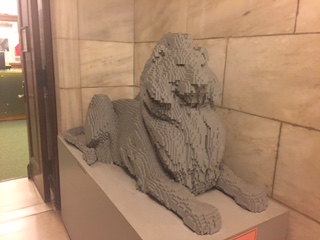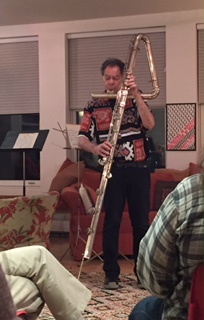Robert also played a gamelan inspired piece for us. There are some fingerings on the flute that allow for a sustained low note while microtonal pitches change above it, which works out perfectly for a gamelan feel. The structure was chorus, verse, chorus, verse (and so on) with the verses being improvisations. Getting to hear Robert play this piece, which has never been written down, was truly an experience.
There was quite a bit of talking in class, and about legitimate things. Like creativity. Robert stressed that if you’re musical, you’re creative, and we need to hear that as musicians and as students. I can’t capture the beauty of everything that was said. But it was really nice to hear. This went along with identifying our personal dreams and goals for our flute playing. Figuring out what you want to do and then sticking with it for ten years was his suggestion. Robert’s ten-year goal was mastering multiphonics.
We also talked quite a bit about the body and its importance. You need your body to be in good shape in order to be a good musician. That’s just how it is. And of course, having a strong core is ideal. One way to pinpoint your weak spots is to play a long tone on a note of your choice…while doing crunches. Your body is also important in your musical involvement of a piece; your mind and heart are key when playing and learning music, and your body is as well, especially considering that your mind and heart reside in your body. This can work well for practicing too. For example, when we were working with Density 21.5, Robert suggested dancing to the piece to get physically involved with the music. He said once during practicing, he ended up laying on the floor with his feet in the air. Yet again, #goals.
Also when working on Density 21.5, we talked about establishing an image or narrative when working on and performing music. One suggestion for Density is to consider the music spatially in 3D, as if the sounds and textures are the result of distance from the performer or listener. Your own perspective in the musical story is also important and something I’ve never really considered before; generally I view any narrative I imagine as an observer, merely an outsider. I hadn’t thought about inserting myself into the story. I suppose that's something to explore.
Other things:
- Mention of Carlos Castenada’s book The Teachings of Don Juan occurred when we were discussing silencing the inner dialogue that happens while performing.
- Creative and emotional “long tones” are necessary for remaining healthy and musical.
- What you say with music is a direct reflection of who you are.
Until next time!

